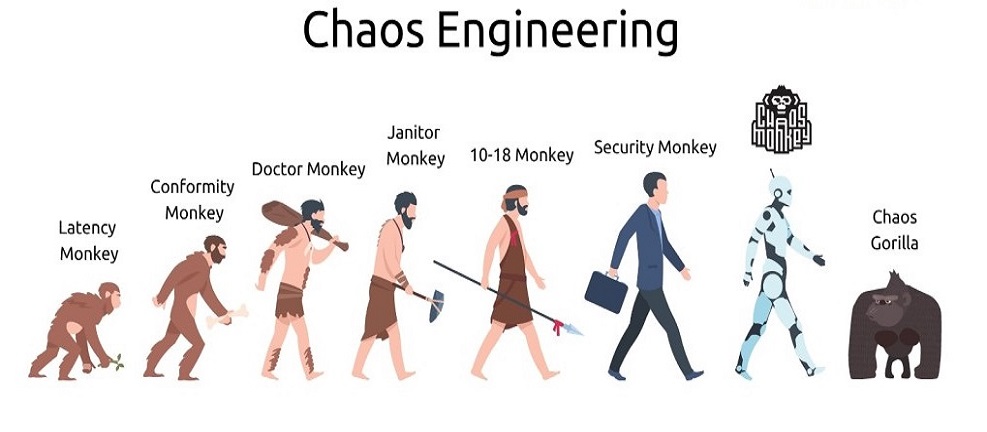"It is better to prepare and prevent than to repair and repent."
This timeless quote encapsulates the essence of Chaos Engineering—a proactive approach to ensuring system reliability in today’s complex IT landscapes.
The Problem: Unpredictability in IT Systems
Headlines like "Service Unavailable" or "Website Not Responding" have become all too familiar. These incidents reflect the growing unpredictability of modern distributed systems. With rising complexity, systems are more prone to unforeseen disruptions, often leading to significant downtime, financial losses, and damaged customer trust.
The solution? Chaos Engineering—a systematic approach to uncovering and addressing vulnerabilities before they become critical failures.
What Is Chaos Engineering?
Chaos Engineering is the practice of deliberately introducing failures into a system to identify weaknesses and ensure it can withstand unexpected disruptions. Unlike traditional testing, which focuses on predefined scenarios, Chaos Engineering emphasizes testing in real-world, unpredictable conditions.
In simple terms, while Software Engineering builds capabilities, Chaos Engineering ensures those capabilities don’t crumble under pressure.
Why Is Chaos Engineering Needed?
The rise of microservices architecture and cloud-native systems has transformed how applications are built and deployed. These innovations come with increased complexity and interdependencies, making it challenging to predict system behavior under stress.
The Cost of Downtime
-
A single outage can cost millions of dollars in lost revenue.
-
It can also erode customer trust, which is harder to rebuild.
The Challenge of Distributed Systems
-
Failures are rarely isolated; they cascade, compounding the problem.
-
Debugging these failures often takes hours, further exacerbating downtime.
Chaos Engineering helps organizations:
-
Uncover vulnerabilities.
-
Build systems that are resilient to real-world failures.
-
Avoid costly downtime and maintain customer trust.
The Process of Chaos Engineering
Chaos Engineering involves intentionally introducing failures into a system and observing its behavior. The process typically includes the following steps:
-
Set a Baseline
Define what “normal” looks like for your system under optimal conditions. -
Create a Hypothesis
Predict how the system should behave during specific disruptions, such as traffic spikes or server failures. -
Run Experiments
Simulate real-world failures like server outages or latency spikes. Analyze the system’s response to these disruptions. -
Evaluate Results
Identify weaknesses, determine areas for improvement, and implement fixes to strengthen system resilience.
Core Principles of Chaos Engineering
Chaos Engineering is built on the understanding that distributed systems are susceptible to several fallacies:
-
The network is reliable.
-
There is zero latency.
-
Bandwidth is infinite.
-
The network is secure.
-
Topology never changes.
-
There is only one admin.
-
Transport cost is zero.
-
The network is homogeneous.
These assumptions, often untrue in real-world conditions, highlight the need for Chaos Engineering to proactively address system vulnerabilities.
Common Chaos Experiments
Here are some typical scenarios tested during Chaos Engineering experiments:
-
Simulating Component Failures: Testing how the system handles the failure of critical microservices.
-
Traffic Spikes: Introducing sudden, high traffic to evaluate performance under load.
-
Infrastructure Failures: Testing the impact of an entire availability zone (AZ) going offline.
-
Latency Injection: Deliberately adding delays to network requests.
-
Memory Exhaustion: Simulating scenarios where system resources like memory are fully utilized.
Popular Chaos Engineering Tools
-
Chaos Monkey
A tool that randomly disables services in production to test system resilience.
Example: Imagine a monkey wreaking havoc in a data center by unplugging servers. Chaos Monkey mimics this scenario digitally. -
Latency Monkey
Introduces network delays to test fault tolerance. -
Janitor Monkey
Identifies and cleans up unused resources to ensure efficient cloud operation. -
Conformity Monkey
Finds instances that do not adhere to best practices and alerts the responsible team. -
Chaos Gorilla
Simulates the failure of an entire availability zone.
Benefits of Chaos Engineering
-
Improved System Resilience
By identifying vulnerabilities early, organizations can prevent future outages. -
Cost Savings
Reducing production incidents minimizes financial losses. -
Enhanced Team Confidence
Teams are better prepared for disaster recovery and crisis management. -
Increased Reliability
Chaos experiments ensure that applications can handle real-world disruptions. -
Customer Trust
Reliable systems maintain customer confidence and brand reputation.
Challenges of Chaos Engineering
-
Implementation Costs
Running chaos experiments at scale can increase operational costs. -
Risk of Disruption
Poorly designed experiments can inadvertently impact end users. -
Monitoring Gaps
Effective tracking and monitoring are critical but not always straightforward.
Conclusion: Embracing Chaos Engineering
In today’s fast-paced digital world, Chaos Engineering is no longer optional—it’s essential. By deliberately testing the limits of distributed systems, organizations can ensure they are prepared for the unexpected.
Adopting Chaos Engineering practices will lead to more resilient systems, happier customers, and a competitive edge in an increasingly complex IT landscape.
Are you ready to embrace chaos and transform your systems?

